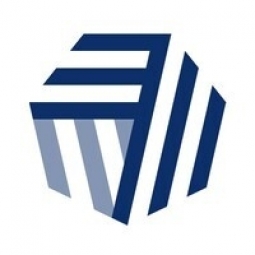Technology Category
- Functional Applications - Inventory Management Systems
- Functional Applications - Manufacturing Execution Systems (MES)
Applicable Industries
- Consumer Goods
- Retail
Applicable Functions
- Procurement
- Warehouse & Inventory Management
Use Cases
- Additive Manufacturing
- Inventory Management
Services
- System Integration
About The Customer
ModaConcrete and TerraFlame are brands acquired by Lenny Vainberg from a private equity firm. ModaConcrete sells architectural precast concrete products designed to create fashionable and beautiful hardscape environments, sold and fulfilled factory direct to trade and design/build channels. The TerraFlame brand designs and markets clever consumer products, while ModaConcrete overlaps from homeowner to the trade. When Vainberg acquired the company, it had a few promising products but was struggling with visibility between manufacturing and fulfillment, understanding true product and operating costs, and had no inventory management system in place.
The Challenge
When Lenny Vainberg, CEO of ModaConcrete and TerraFlame, acquired the company, it had a few promising products that were gaining traction in retail. However, beneath the surface, the company was struggling. Revenue was not meeting expectations and there was a lack of visibility between manufacturing and fulfillment, making it difficult to understand the true product and operating costs. The operations were in a raw state, with no inventory management system in place. The company needed a robust solution, but the ERP systems Vainberg had worked with in the past required significant time and capital resources, which was a huge investment for a company at this early stage. They needed a solution that was cost-effective, efficient, and could provide the visibility they needed to manage their operations effectively.
The Solution
Vainberg's search for a solution led him to Cin7, an inventory management system. ModaConcrete and TerraFlame began using Cin7 from the beginning to the end of the product journey, starting with manufacturing. About 60 percent of their business is products that they manufacture in-house, so visibility was critical. To manage the manufacturing, they used the Bill of Materials (BOM) functionality of Cin7, which allowed them to measure and track every raw material that goes into making a new product. They also used Cin7's Made to Order functionality, which allowed them to customize products for their B2B sales direct to trade stores, construction companies, and job sites. This level of inventory control had huge advantages, including careful management of material costs, easier forecasting requirements, and reduced manual inventory tracking tasks. Additionally, Cin7's native EDI integration capability allowed ModaConcrete and TerraFlame to grow rapidly, with their products now available in all the biggest US retail outlets.
Operational Impact
Quantitative Benefit

Case Study missing?
Start adding your own!
Register with your work email and create a new case study profile for your business.
Related Case Studies.
.png)
Case Study
Improving Vending Machine Profitability with the Internet of Things (IoT)
The vending industry is undergoing a sea change, taking advantage of new technologies to go beyond just delivering snacks to creating a new retail location. Intelligent vending machines can be found in many public locations as well as company facilities, selling different types of goods and services, including even computer accessories, gold bars, tickets, and office supplies. With increasing sophistication, they may also provide time- and location-based data pertaining to sales, inventory, and customer preferences. But at the end of the day, vending machine operators know greater profitability is driven by higher sales and lower operating costs.

Case Study
Improving Production Line Efficiency with Ethernet Micro RTU Controller
Moxa was asked to provide a connectivity solution for one of the world's leading cosmetics companies. This multinational corporation, with retail presence in 130 countries, 23 global braches, and over 66,000 employees, sought to improve the efficiency of their production process by migrating from manual monitoring to an automatic productivity monitoring system. The production line was being monitored by ABB Real-TPI, a factory information system that offers data collection and analysis to improve plant efficiency. Due to software limitations, the customer needed an OPC server and a corresponding I/O solution to collect data from additional sensor devices for the Real-TPI system. The goal is to enable the factory information system to more thoroughly collect data from every corner of the production line. This will improve its ability to measure Overall Equipment Effectiveness (OEE) and translate into increased production efficiencies. System Requirements • Instant status updates while still consuming minimal bandwidth to relieve strain on limited factory networks • Interoperable with ABB Real-TPI • Small form factor appropriate for deployment where space is scarce • Remote software management and configuration to simplify operations

Case Study
Digital Retail Security Solutions
Sennco wanted to help its retail customers increase sales and profits by developing an innovative alarm system as opposed to conventional connected alarms that are permanently tethered to display products. These traditional security systems were cumbersome and intrusive to the customer shopping experience. Additionally, they provided no useful data or analytics.

Case Study
How Sirqul’s IoT Platform is Crafting Carrefour’s New In-Store Experiences
Carrefour Taiwan’s goal is to be completely digital by end of 2018. Out-dated manual methods for analysis and assumptions limited Carrefour’s ability to change the customer experience and were void of real-time decision-making capabilities. Rather than relying solely on sales data, assumptions, and disparate systems, Carrefour Taiwan’s CEO led an initiative to find a connected IoT solution that could give the team the ability to make real-time changes and more informed decisions. Prior to implementing, Carrefour struggled to address their conversion rates and did not have the proper insights into the customer decision-making process nor how to make an immediate impact without losing customer confidence.









